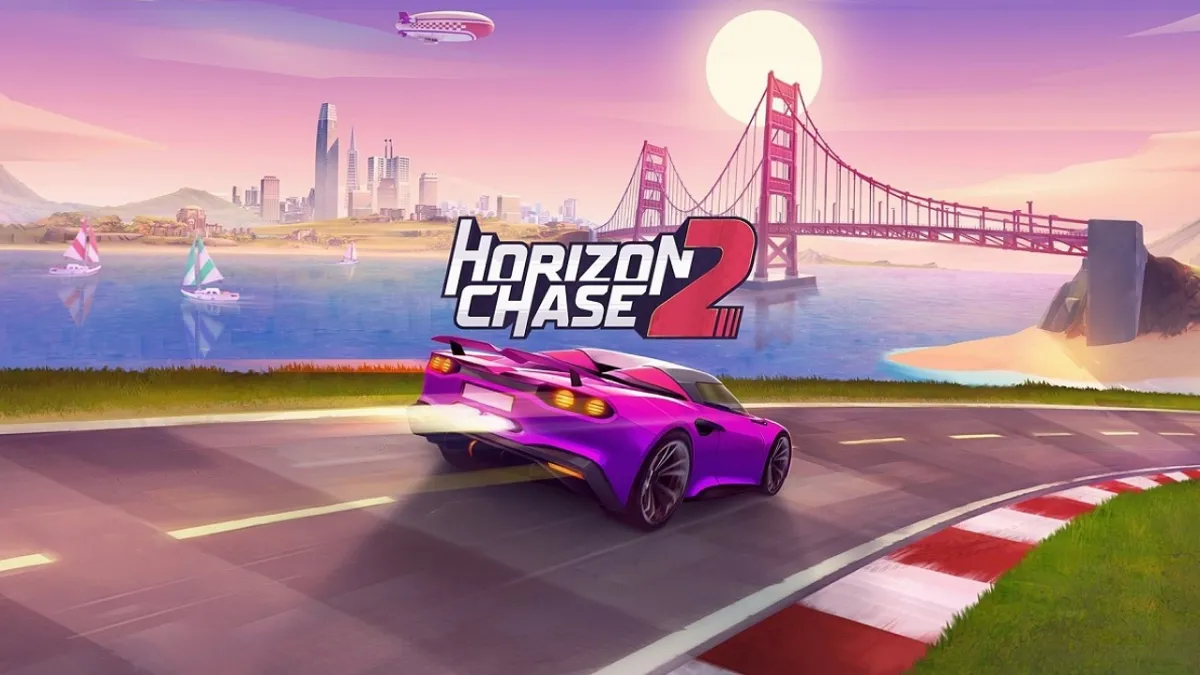Baldur’s Gate 3 has come a long way. Originally having a quiet early access launch on PC and Google Stadia of all things, Larian Studios’ follow-up to the original BioWare classics exploded onto the scene with its 1.0 launch and became one of the biggest games of the year overnight. Console players have been watching from the sidelines as PC players have been adventuring for the past month, but now they can dive in and see what all the hype is about.
Despite Baldur’s Gate 3’s massive ambitions, the game isn’t held back on PlayStation 5 at all. The PS5 version is essentially equivalent to the PC version running at max settings at 1440p. The game defaults to Performance mode, which runs at a smooth 60 FPS at an upscaled 1440p resolution, but there’s also a Quality mode that offers a locked 30 FPS at native 1440p resolution. If you’re playing split-screen, the game defaults to the latter.

Just like the PC version, the PlayStation 5 port doesn’t hold a solid 60 FPS at all times. Heavier scenes, particularly in settlements like the Druid Grove, can cause it to dip slightly, but the worst offender is the urban setting of Act 3 which causes the framerate to tank just like it does on PC. Still, the game remains playable at all times and it’s never egregiously bad, especially for a slower game like this.
Baldur’s Gate 3 is a massive adventure not just in length, but in depth. The level of reactivity that Larian has achieved is truly remarkable, and it feels like there’s unique dialogue for just about any crazy plan that players can come up with. From blasting Astarion with a devastating cannon and then reviving him to get his thoughts to striking up a conversation with Gale while you’re naked, it feels basically impossible to break Baldur’s Gate 3’s simulation.

Baldur’s Gate 3’s writing doesn’t sacrifice its quality to offer this quantity, either. While the plot is simplistic, the characters are the real focus (as they are with most party-based RPGs). Every single one of the game’s companions — even the seemingly one-note ones like Lae’zel or Minthara — is incredibly interesting and instantly charismatic.
They demonstrate incredible depth throughout your journey with arcs that make sense no matter which way you play them. Your character plays a key role in their stories, but just like in any great RPG, they’re their own people who act of their own volition. Making the wrong choices can cause them to part ways with you and it’s highly unlikely you’ll agree on everything.

Baldur’s Gate 3’s companions are so brilliant because they shape you as a player just as much as you shape them. I know that sounds pretentious, but just hear me out. Each of the game’s companions is specifically designed to make you care about an important pillar of the game world, shaping your decisions later in the game based on your experiences with your pals.
Shadowheart’s story gives you a personal connection to the Shar/Selune divide in the region, Lae’zel’s arc gives you a front-row seat to Githyanki culture and gives you insight into the backstory of the Mind Flayers, and Wyll and Karlach show both sides of the Hells and give you the information you’ll need to know if you want to effectively deal with demons like Mizora and Raphael during your journey.

Astarion is your guide to the seedy underworld of Baldur’s Gate. Jaheira’s a walking museum who has done all this before. Halsin gives you a connection to the Druids and is also a walking history book because of his age. Even Minthara, the optional evil companion, fits this mold because she humanizes a side of the story that you’d miss out on if you went the good route.
Even Minsc (and his loveable miniature giant space hamster Boo), the comic relief companion, acts as a foil to Jaheira. Their dynamic puts a face to the internal struggle that every Baldur’s Gate player faces, weighing the pros and cons of headstrong action vs. calculated planning. Their arguments at camp feel like they’ve been plucked straight out of a stuffy basement with dice and miniatures messily strewn about a table, the smell of pizza wafting through the air.

Baldur’s Gate 3 forces you to interact with the world through its companions. It presents you with the conflict between Shar and Selune and asks you what you think of it. What happens to Shadowheart is your answer. It asks you what you think about the Githyanki way of life and how you feel about unquestioning devotion to a deity. What happens to Lae’zel is your answer. The character arcs in Baldur’s Gate 3 are a call-and-response, an aptitude test that leaves you with a party that reflects your worldview.
Naturally, people will challenge that worldview, and that’s where the game’s excellent dialogue system comes into play. Your traits, background, skills, and adventuring experience shape the responses you can give to people. This isn’t just a superficial thing, either. There are genuinely surprising quest outcomes and character reactions resulting from the most minute choices you made hours ago.

The game’s commitment to the dice is also admirable, forcing the player into uncomfortable situations that they might not be prepared for. While you can cheese most of its skill checks with spells like Guidance or spamming Bardic Inspiration, failure is a key part of Baldur’s Gate 3.
However, like a great Dungeon Master, Baldur’s Gate 3 makes failure fun. Failure doesn’t lock you out of content or railroad you into a bad ending. Instead, failure forces you to flex your creative muscles and try a different approach. Also, just like in real life, not everyone is going to agree with your worldview. You can’t change everyone’s mind, and you have to stick by the choices you and your companions make. All of the “I could” in the world wouldn’t matter at all if there wasn’t a possibility for “I couldn’t.”
Of course, this approach wouldn’t work if the game didn’t let you be as creative as you wanted. It’s a hard thing to allow for complete flexibility in a game, especially one as intricate as this, but in this case, Baldur’s Gate 3 is exceptionally elastic. Want to use Speak With Dead to question someone just killed but it won’t talk to you because, well, you killed them? Just use Disguise Self to change your appearance! Need to hit a button across the room to disarm a trap? Take off your shoe and throw it at it! These sound comical on paper, but in practice, these eureka moments are some of the highest highs you can get from a video game. “I can’t believe that worked” will become your motto.

Combat is equally flexible. While it starts out slow with players using nothing more than their basic attacks each turn, it quickly becomes a dance of buffs and debuffs as your party seeks advantage and high ground during fights. Baldur’s Gate 3 is a highly lethal game, and you’ll have to fight tooth and nail to get through some of the harder encounters. Every scroll, every arrow, every item in your inventory becomes a tool.
Coordination is key. Having an archer perched atop a hill use Ensnaring Strike to lock an enemy in place so Karlach can rush in for an easy kill never gets old, and turning a particularly annoying foe into a sheep to buy yourself some breathing room is a perfectly valid strategy. It’s even better with friends since you can discuss your plans in real-time, poring over the battle map as if it’s the world’s most serious game of Risk.

Dungeons and Dragons is an inherently social game, which is why Baldur’s Gate 3 shines in multiplayer. Online co-op and split-screen multiplayer were available in the PC version of the game, but local co-op feels right at home on PlayStation 5. Sharing a session with a friend or partner just feels right, and with the addition of Withers’ Wardrobe of Wayward Friends, Baldur’s Gate 3 has become even more of a drop-in/drop-out co-op game that’s perfect for date night or a get-together with friends.

It can’t be overstated how dense Baldur’s Gate 3 is. You could easily spend hours in a settlement talking with everyone and immersing yourself in the web of relationships between the townsfolk. Even when you think you’ve done it all, the game will drop another dozen hours of content on you. Maybe your Ranger casts Speak With Animals and chats up a cow that isn’t really what it seems to be. Maybe you get caught stealing and thrown in jail only to discover even more dialogue and quests in the brig.
Even something as simple as romance has a shocking amount of depth to it. From rolling the dice to determine how things play out with Lae’zel or letting Halsin bring a whole new meaning to the term “bear,” everything feels personal. Baldur’s Gate 3 also handles romance and sex in a surprisingly mature manner, with characters engaging in casual hookups to celebrate a hard-fought victory and some being open to polyamory. The game also goes beyond the usual “choose the flirty options and get rewarded with a sex scene” trope, too. Romances feel like real relationships here, complete with hardship and doubt.

Astarion’s romance is a highlight, for example. Having spent years seducing people and luring them to their deaths, he has an uncomfortable relationship with sex and physicality now that he’s a free man. He might excitedly agree to sleep with you one night only to be upset about it in the morning, and having to navigate that trauma response yourself via dialogue is difficult. It’s easy to say the wrong thing, and it’s easy to reach what would be a “breakup” scene in any other game. But Baldur’s Gate 3 is not those other games, so it makes you roll with the punches and ride the very real waves of a relationship with both ups and downs.

Even with five characters under my belt (I’ve only finished with one of them), I’m still seeing new things as I start new adventures with friends. So much of what you see depends on your party composition and background, so you’re bound to hear at least one or two new lines of dialogue or entirely new scenes based on who’s with you at the time. Playing as a Tiefling completely changes the vibe of the first Act, for example, just as playing as a Drow gets you a ton of unique dialogue later on. It goes beyond races, but those are the easiest examples.
Unfortunately, Baldur’s Gate 3 isn’t able to maintain its momentum throughout the entirety of its hundred-hour runtime. The quality and reactivity of Act 1 slowly diminishes throughout the course of the adventure, with Act 3 feeling the most rushed of the trio. Companions have less to say, some romances and questlines fizzle out, and performance takes a massive dive due to the bustling city crowds. Even with that said, though, Baldur’s Gate 3 stands head and shoulders above anything I’ve ever played even at its lowest point.

The Verdict
It’s a rare treat to experience a game with the kind of magic that Baldur’s Gate 3 has. I knew from the first moment I picked the game up during early access all those years ago that it had the potential to be something truly special. The fact that Larian Studios was able to deliver on its vision with such finesse should be celebrated. Baldur’s Gate 3 is a once-in-a-generation achievement that is not only a testament to why people love RPGs, but also why people love video games.








